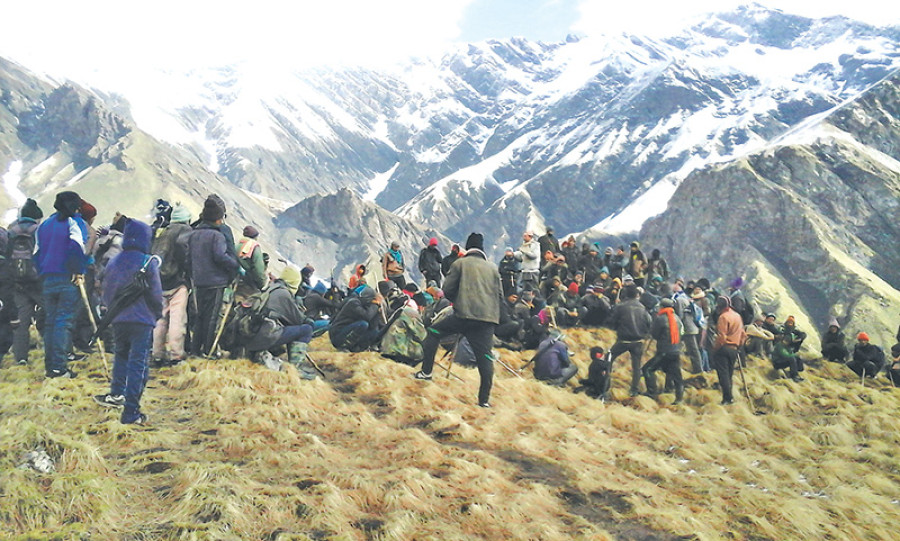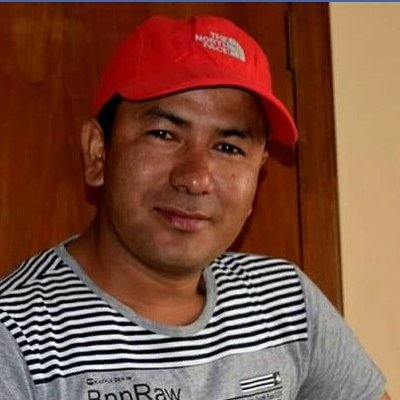National
Temporary ban on yarsagumba harvest
Surma Rural Municipality in Bajhang district has issued a temporary ban on yarsagumba harvesting saying that the caterpillar fungus was still sprouting and should not be picked.
Basant Pratap Singh
Surma Rural Municipality in Bajhang district has issued a temporary ban on yarsagumba harvesting saying that the caterpillar fungus was still sprouting and should not be picked.
Authorities in the far western district published the ban as harvesters returned with small pickings this year.
Yarsagumba, dubbed Himalayan Viagra, is believed to have libido-boosting powers. The caterpillar fungus is harvested before the monsoon season, between May and June, when tens of thousands of people swarm over the Himalayan foothills in Rukum, Dolpa and Bajhang districts in western Nepal to collect it.
In Bajhang, yarsa collectors who had reached the highlands were forced to return empty-handed after authorities issued an abrupt ban. “The collectors reached the harvest area even before the fungus has sprouted,” said Prem Bahadur Bohara, treasurer of the Dhanseri Forest Management Committee.
“Yarsa is yet to sprout. As the meadows where the fungus has sprouted may be damaged by being trampled by crowds of people, we have issued a temporary ban on its harvest.” He said that the ban would remain until May 11.
According to Gyan Bahadur Bohara, president of the committee, anyone caught harvesting the fungus will be fined Rs100,000. He said that six people had been deployed to guard the mountain slopes. “Almost all collectors who have reached the highlands have returned,” said Pabitra Bohara, a yarsa collector of Surma. “Except for a few people who have travelled from a long distance, there is no one in the area.”
Whole families will leave their homes and spend at least a month in the highlands where oxygen levels are low. The income will feed them for the entire year, so they take the hardships in their stride. Yarsagumba is found at elevations between 3,000 and 5,000 metres.
The herb is the world’s most expensive medicinal fungus. it can fetch as much as $100 per gram on the Chinese market, making it more expensive than gold, according to reports.
The herb is also used to cure anemia, chest and lung infections, tuberculosis, Hepatitis B and kidney and liver diseases.
Crowds of people from Mugu, Dolpa, Rukum, Jajarkot and surrounding districts have assembled in the highlands of Dolpa and Mugu, bringing blankets, tents and cooking materials with them as the picking season begins.
Schools are normally closed during this period, and villages in the western and far western mountain regions become empty as their inhabitants migrate to the highlands to join the key seasonal income generating activity.
A yarsa collector earns about Rs103,000 per year by selling the herb, which is a lot more money than what they would make from other economic activities, according to a Nepal Rastra Bank study. A family earns about Rs277,000 annually, which amounts to 56 percent of its total yearly income.
According to the report, the herb fetched $100,000 (Rs10.7 million) per kg in China and $130,000 (Rs13.92 million) per kg in Singapore. The largest market is China, while the herb is also sold in Singapore, Malaysia, South Korea, Thailand, Japan, the UK and the US, according to the central bank.




 14.72°C Kathmandu
14.72°C Kathmandu






%20(1).jpg&w=300&height=200)






